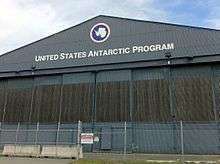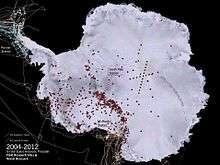United States Antarctic Program


United States Antarctic Program (or USAP; formerly known as the United States Antarctic Research Program or USARP and the United States Antarctic Service or USAS) is an organization of the United States government which has presence in the continent of Antarctica. It coordinates research and the operational support for research in the region. The body's goals are
"...to expand fundamental knowledge of the region, to foster research on global and regional problems of current scientific importance, and to use the region as a platform or base from which to support research."[1]

The U.S. Antarctic Program, funded by the National Science Foundation's Office of Polar Programs, supports only that research that can be done exclusively in Antarctica or that can be done best from Antarctica.[1]
Currently, the USAP maintains 3 year round research stations in Antarctica (McMurdo Station, Amundsen–Scott South Pole Station, and Palmer Station), as well as several seasonal field camps.[2] Additionally, the USAP maintains research vessels that sail in the Antarctic waters.
The program's fiscal budget for 2008 was $295 million,[3] and for 2012 was $350 million.[4]

See also
References
- 1 2 "Antarctic Research nsf08535". National Science Foundation. January 16, 2008. Retrieved 5 September 2010.
- ↑ "United States Antarctic Program". Retrieved 5 September 2010.
- ↑ "U.S. Antarctic Program". Fact Sheet. The National Science Foundation. December 29, 2008. Retrieved 5 September 2010.
- ↑ "U.S. Antarctic Program". Fact Sheet. The National Science Foundation. January 10, 2013. Retrieved 8 February 2015.
External links
|